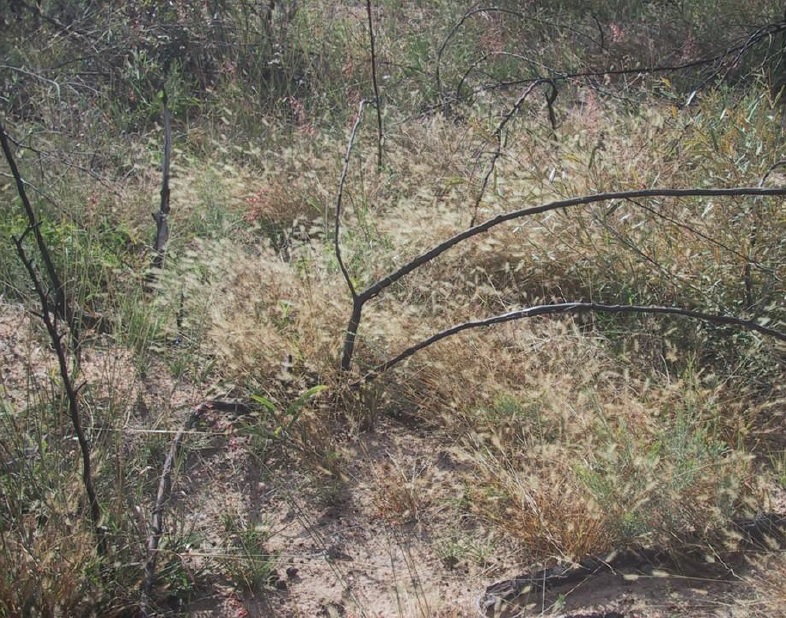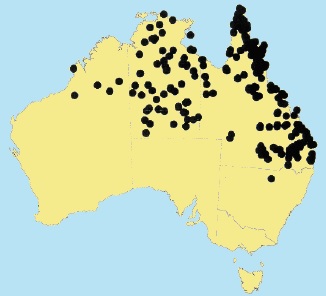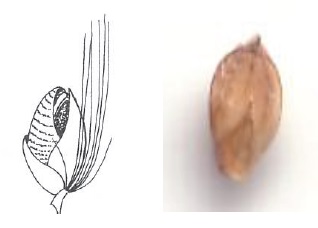Pigeon Grass – Setaria surgens
Name
Setaria is from the Latin seta (bristle), referring to the bristly inflorescences; surgens from the Latin surgo (raise), referring to the long ascending culms.
Description
Setaria surgens is a decumbent or ascending annual, 20–60 cm tall. The inflorescence is bottle-brush shaped and the seeds are held close to the stem among stiff whitish to purplish 1 cm long bristles. These bristles remain after the plump, ripe seeds fall.
Distribution and Habitat
Pigeon Grass is endemic to Australia and grows mostly on sandy soils of forest country.
Ecological Notes
The seeds of many Setaria species are a valuable food source for numerous bird species. Varieties of Setaria italica seeds are commonly found in bird seeds sold in the shops. Setaria surgens grass seeds are a food source for many Australian birds; it is a source of food for the rare, black-throated finch.
Queensland Department of Main Roads is currently using this species for roadside revegetation.
Propagation
Seeds only needed to be stored for one to two months to overcome dormancy. Pigeon Grass is sometimes rather delicate and should be planted in clumps. When the plant dies it should have produced plenty of seeds which should germinate quickly in the new season.
References
- Gardner CA (1952) Flora of Western Australia Vol. 1, Part 1. In ‘Gramineae’. (Government Printer:Perth)
- Jacobs SWL, Whalley RDB, Wheeler DJB (2008) ‘Grasses of New South Wales (Fourth Edition).’ (University of New England: Armidale)
- Sharp D, Simon BK (2002) AusGrass: grasses of Australia. CD-ROM, Version 1.0. (Australian Biological Resources Study: Canberra, and Environmental Protection Agency: Brisbane)
- Simon BK (1993) ‘A Key to Australian Grasses.’ (Qld Dept Primary Industries: Brisbane)
- Tothill JC, Hacker JB (1983) ‘The grasses of southern Queensland.’ (University of Queensland Press:St Lucia)
Related Pages
Pigeon Grass © C.Gardiner JCU Townsville 2012




